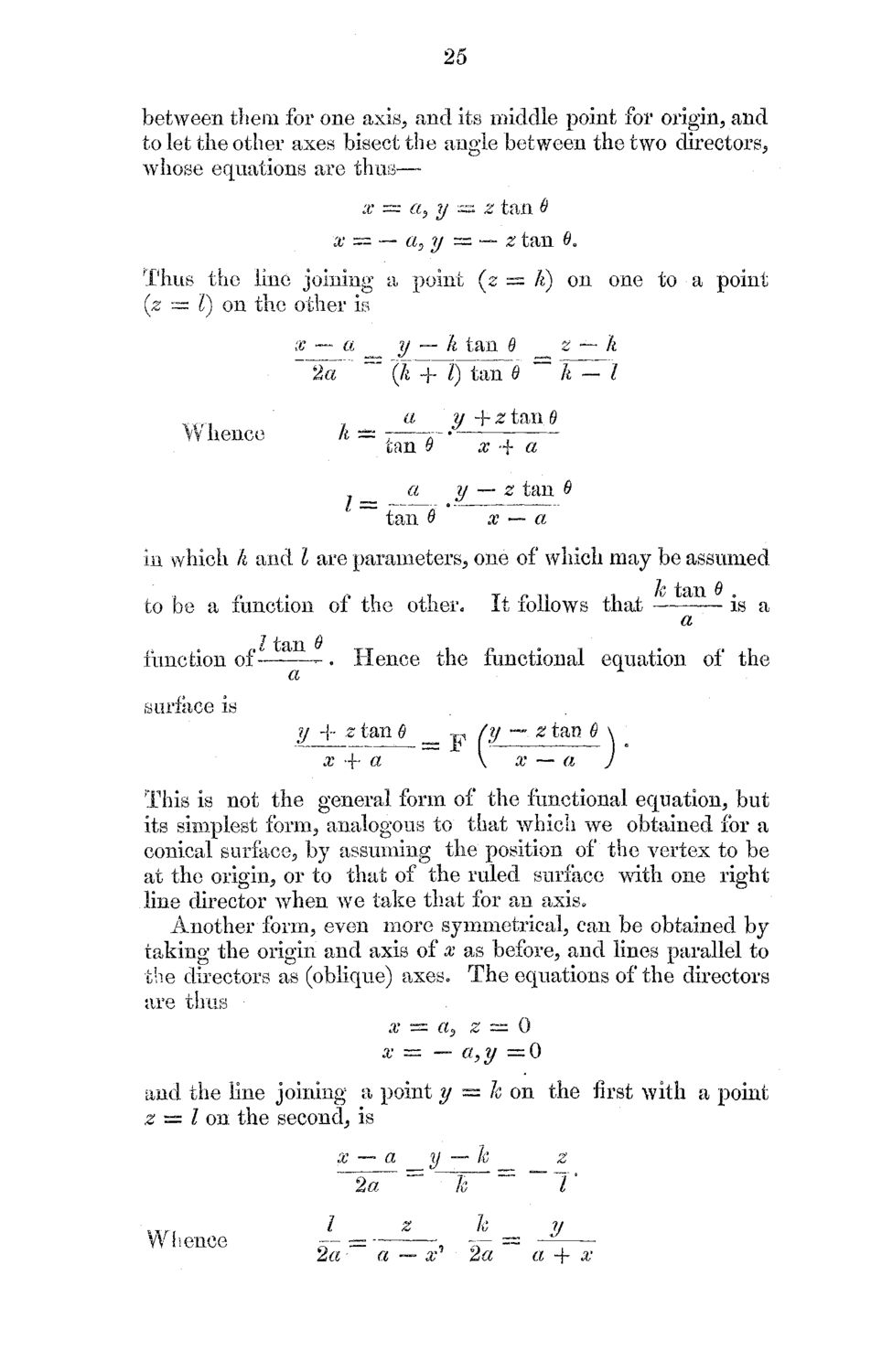| |
| |
Caption: Mathematical Models Catalog of a Collection of Models of Ruled Surfaces
This is a reduced-resolution page image for fast online browsing.

EXTRACTED TEXT FROM PAGE:
25 between them for one axis, and its middle point for origin, and to let the other axes bisect the angle between the two directors, whose equations are thus—x = a, y ==: z tan 0 x = — a5 y — — z tan 0 B Thus the line joining a point (z = ft) on one to a point (2 = £) on the other is x - a _ y - ft tan 6 z - ft ~ 2a " (A + l) tan 0 ""ft- Z W hence ft" can 0 3/ + #tan.0 a; -f # y — z tan 0 a — a ? tan ^ in which A and I are parameters, one of which m a y be assumed h tan 6 is a a function of-——- .• Hence the functional equation of the surface is y + s tan B x + « \ x — a J to be a function of the other. It follows that This is not the general form of the functional equation, but its simplest form, analogous to that which w e obtained for a conical surface, by assuming the position of the vertex to be at the origin, or to that of the ruled surface with one right line director w h e n w e take that for an axis. Another form, even more symmetrical, can be obtained by taking the origin and axis of x as before, and lines parallel to the directors as (oblique) axes. T h e equations of the directors are thus x = a5 z = 0 x = — a,y = 0 and the line joining a point y = h on the first with a point z = I on the second, is x — a y — k z 2a Whence 7 I z 2a ~~ a — x1 I c h 2a I' y a -f x
| |